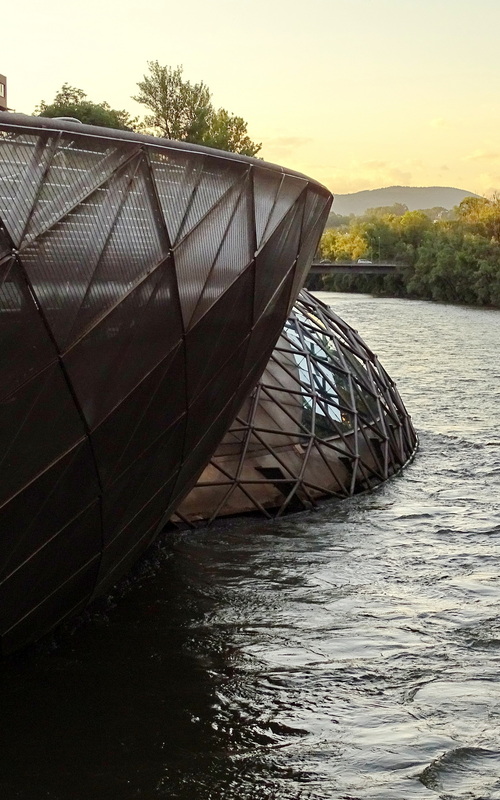Urban chemistry as a new discipline exploring chemical and chemico-biological aspects of urban environment Letter to Editor
Main Article Content
Abstract
Urban sciences can be divided into three directions: Natural, Humanities and Engineering. Within the fields of urban natural and urban engineering (technical) sciences, chemical and chemico-biological research take an important place. We propose using the new term "urban chemistry" (i.e. chemistry of the urban environment) focusing on the chemical aspects of the atmosphere, water bodies, and soil of cities. Urban chemistry is interconnected with urban ecology, toxicology and urban biology, and among the biological disciplines, it is particularly related to urban botany. Urban chemistry can be seen as a separate direction of urban natural sciences, which will significantly contribute to sustainable development of cities.
Article Details
Issue
Section

This work is licensed under a Creative Commons Attribution-NonCommercial-NoDerivatives 4.0 International License.
Authors who publish with this journal agree to the following terms:
Authors retain copyright and grant the journal right of first publication with the work simultaneously licensed under a Creative Commons Attribution License that allows others to share the work with an acknowledgement of the work's authorship and initial publication in this journal.
Authors grant to the Publisher the following rights to the manuscript, including any supplemental material, and any parts, extracts or elements thereof:
- the right to reproduce and distribute the Manuscript in printed form, including print-on-demand;
- the right to produce prepublications, reprints, and special editions of the Manuscript;
- the right to translate the Manuscript into other languages;
- the right to reproduce the Manuscript using photomechanical or similar means including, but not limited to photocopy, and the right to distribute these reproductions;
- the right to reproduce and distribute the Manuscript electronically or optically on any and all data carriers or storage media – especially in machine readable/digitalized form on data carriers such as hard drive, CD-Rom, DVD, Blu-ray Disc (BD), Mini-Disk, data tape – and the right to reproduce and distribute the Article via these data carriers;
- the right to store the Manuscript in databases, including online databases, and the right of transmission of the Manuscript in all technical systems and modes;
- the right to make the Manuscript available to the public or to closed user groups on individual demand, for use on monitors or other readers (including e-books), and in printable form for the user, either via the internet, other online services, or via internal or external networks.
How to Cite
References
Hidy GM. Urban Air Chemistry in Changing Times. Atmosphere. 2022; 13(2):327. https://doi.org/10.3390/atmos13020327
Harrison, R.M. Urban atmospheric chemistry: a very special case for study. npjClim Atmos Sci. 2018.1, 20175.https://doi.org/10.1038/s41612-017-0010-8
Noreen Khalid, Ali Noman, Atifa Masood, Aasma Tufail, NailaHadayat, Ghalia S. H. Alnusairi, Saad Alamri, Mohamed Hashem & Muhammad Aqeel. Air pollution on highways and motorways perturbs carbon and nitrogen levels in roadside ecosystems, Chemistry and Ecology.2020; 36:9, 868-880, https://doi.org/10.1080/02757540.2020.1791102
Zhou, D., Lin, Z., Liu, L. et al. Spatial-temporal characteristics of urban air pollution in 337 Chinese cities and their influencing factors. Environmental Science and Pollution Research.2021; 28, 36234–36258.https://doi.org/10.1007/s11356-021-12825-w
Patella, V., Florio, G., Magliacane, D. et al. Urban air pollution and climate change: “The Decalogue: Allergy Safe Tree” for allergic and respiratory diseases care. Clin Mol Allergy.2018;16, 20. https://doi.org/10.1186/s12948-018-0098-3
European Environment Agency (EEA) report. EEA Report No 28/2016. https://www.eea.europa.eu/data-and-maps/figures/percentage-of-the-eu-urban
Gladkov E.A., Gladkova, O.V. Ornamental plants adapted to urban ecosystem pollution: lawn grasses tolerating deicing re-agents. Environmental Science and Pollution Research. 2022; 29, 22947–22951. https://doi.org/10.1007/s11356-021-16355-3
Gladkov E.A., Gladkova O.V. Plants and maximum permissible concentrations of heavy metals in soil. Archives for Technical Sciences.2021; 25(1): 77-82.
Gladkov E.A., Gladkova, O.V. New directions of biology and biotechnology in urban environmental sciences. Hemijskaindustrija. 2021; 75: 6, 365-368. https://doi.org/10.2298/HEMIND211230034G
Yang Jin-Ling, Zhang Gan-Lin. Formation, characteristics and eco-environmental implications of urban soils – A review.Soil Science and Plant Nutrition.2015. 61:sup1, 30-46, https://doi.org/10.1080/00380768.2015.1035622
Rezapour, S., Siavash Moghaddam, S., Nouri, A. et al. Urbanization influences the distribution, enrichment, and ecological health risk of heavy metals in croplands. Sci Rep. 2022; 12, 3868.https://doi.org/10.1038/s41598-022-07789-x
Cheng, N., Liu, L., Hou, Z. et al. Pollution characteristics and risk assessment of surface sediments in the urban lakes.Environmental Science and Pollution Research.2021; 28, 22022–22037 (2021). https://doi.org/10.1007/s11356-020-11831-8
Aslanidis P-SC, Golia EE. Urban Sustainability at Risk Due to Soil Pollution by Heavy Metals—Case Study: Volos, Greece. Land. 2022; 11(7):1016. https://doi.org/10.3390/land11071016
Hernández AJ, Pastor J. Relationship between plant biodiversity and heavy metal bioavailability in grasslands overlying an abandoned mine. Environ Geochem Health. 2008 ;30(2):127-33. https://doi.org/10.1007/s10653-008-9150-4





